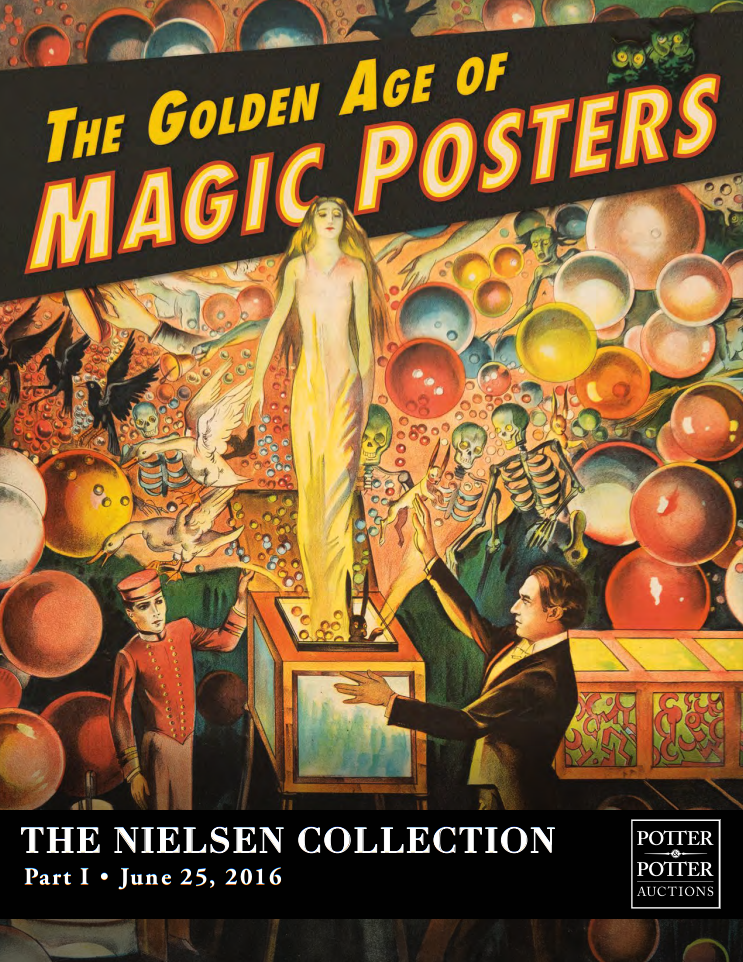Martin Gardner, puzzle master extraordinaire
Su BBC NEWS alla pagina http://www.bbc.com/news/magazine-29688355 si parla del grande matematico e prestigiatore Martin Gardner e dei suoi puzzle e creazioni.

The writer and puzzle master Martin Gardner, who died in 2010, was once said to have turned dozens of innocent youngsters into maths professors – and thousands of maths professors into innocent youngsters. Maths writer Colm Mulcahy looks back at the amazing career of a man who would have been 100 this week.
Let’s warm up with three gems from the vaults:
1. What angle is made by the two red lines drawn on the two sides of the cube, as shown in the illustration?

2. A logician visits a distant planet inhabited by two groups of aliens, compulsive liars and faithful truth-tellers. She comes to a fork in a road – one road goes to the left, the other to the right. She meets two aliens there, one a liar, the other a truth-teller… but she doesn’t know which is which. The logician must ask just one Yes/No question to discover which road she should take to reach their leader. She thinks for a moment and then asks her question. What question might she have asked?
3. Imagine heating a metal ring enough so it expands. What happens to the hole, does it get bigger or smaller?

You may already know the answers to the above questions if you’ve read some of the 100 or so books written by the American man of letters and numbers, Martin Gardner (1914-2010). His works have long been popular with a variety of people, from science and maths types, to lovers of magic, enemies of pseudoscience, and aficionados of Lewis Carroll – Gardner’s Annotated Alice, by far his best seller, has sold more than a million copies.
The most important thing about the three puzzles above is that you can work them out right now, if you have initiative and patience (and a little knowledge of physics). No mathematical training is required. There are some hints at the bottom of the page, and below that, the answers.
Gardner specialised in such puzzles, having studied closely the works of the masters of an earlier generation, England’s Henry Dudeney and his American counterpart, Sam Loyd.
The reward for solving puzzles like these, unaided, is to experience priceless Aha! moments. “Googling it is not the Gardner way,” says the philosopher Bob Crease in Physics Today this month. “The Gardner way is to ignite your fascination so that you experience the pleasure of finding the answer yourself.”
Gardner’s writing has ignited many sparks over the decades, and even inspired a few scriptwriters fond of nerdy inside jokes. The logician puzzle above resurfaced (slightly repackaged) in the Pyramids of Mars episode of Dr Who, from October 1975. Maths writer Simon Singh, meanwhile, says some of the Simpsons writers – who occasionally slip hidden mathematical references into the storyline – were influenced by Gardner.
One of the last true polymaths, Martin Gardner is best remembered for the quarter century’s worth of Mathematical Games columns he wrote for Scientific American magazine, where he injected a spirit of fun and play into a subject many associate with fear and drudgery. It went a lot further than puzzles – there was substance, depth and a fair share of mystery and wonder in the topics he wrote about.
 Gardner’s column introduced the world to Mandelbrot’s fractals
Gardner’s column introduced the world to Mandelbrot’s fractalsHis lifelong passions included conjuring, chess, wordplay, puzzles of all kinds, science (good, bad and bogus), philosophy and children’s literature. He wrote about all of those, extensively, in essays, reviews and books, for a period of 80 years.
His friends, associates and admirers included Arthur C Clarke, Isaac Asimov, Carl Sagan, M C Escher, Salvador Dali, Douglas Hofstadter, Stephen Jay Gould, Noam Chomsky, W H Auden, as well as magicians Penn & Teller.
Throw in leading mathematicians John Horton Conway, Roger Penrose and Benoit Mandelbrot, and you start to see how well connected he was. It was Gardner who introduced the public to Conway’s Game of Life, Penrose’s aperiodic tilings of the plane, and Mandelbrot’s fractals.
Two classic columns

1. The Game of Life appeared in Scientific American in 1970, and was by far the most successful of Gardner’s columns, in terms of reader response. It concerns a deceptively simple cellular automata model of “life,” in which small organisms are born, evolve, and die according to set rules. Early computer users programmed it with enthusiasm, often at the expense of their official duties, and it soon attracted the attention of theorists. Via Gardner’s column, Conway asked for a proof that infinitely growing patterns existed, and offered a cash prize for a solution. In due course, this was claimed by a young computer scientist named Bill Gosper. Conway was then able to prove that Life was in essence a Turing machine that in principle could do everything computers could.
2. In 1977, Gardner wrote about what are now known as Penrose tiles. These provide a novel and surprising way to cover a flat surface with the same two shapes, known as darts and kites, over and over, yet in such a way that no repeating pattern is present. With a little imagination, a similar nonperiodic effect is achievable using traditional tile shapes, such as squares or hexagons, though we are more used to seeing floors tiled with those in totally predictable ways. The point of darts and kites is that they can only tile in a nonperiodic fashion, something that was not even known to be a possibility until the mid-60s.
He also broke the story of the invention of RSA cryptography — the now standard way in which confidential data such as passwords, bank information, and the like, are secured in digital transmission – getting into trouble with the US government in the process.
And he was the first to reach a wide audience with a popular piece on the mathematical underpinnings of Escher’s amazing art.
Two of the recurring themes in Gardner’s thinking were that puzzles, far from being trivial, were:
* An effective way to engage people (especially young people) in a topic
* A fun way to discover new mathematics, and maybe even new science
“The best way, it has always seemed to me, to make mathematics interesting to students and laymen is to approach it in a spirit of play,” he wrote.
“Start Quote
I believe that the human mind, or even the mind of a cat, is more interesting in its complexity than an entire galaxy if it is devoid of life”
Martin Gardner
“Surely the best way to wake up a student is to present him with an intriguing mathematical game, puzzle, magic trick, joke, paradox, model, limerick, or any of a score of other things that dull teachers tend to avoid because they seem frivolous. The frivolity keeps the reader alert. The seriousness makes the play worthwhile.”
Readers may be surprised, he added, by the amount of nontrivial mathematics they absorb without even trying.
Penrose tiles are a good example of just how “nontrivial” the consequences of his puzzle column could be. The materials scientist Dan Shechtman actually won a Nobel Prize in chemistry in 2011 “for the discovery of quasicrystals” – three-dimensional Penrose tiles – in some aluminium-manganese alloys.
“They are a marvellous example of how a mathematical discovery, made with no inkling of its application to reality, may turn out to have been anticipated by Mother Nature!” Gardner wrote in his memoirs, Undiluted Hocus-Pocus.
Ironically, despite his considerable reputation in mathematical circles, Gardner had no credentials in the field. At the University of Chicago, in the 1930s, he’d studied philosophy. “The big secret of my success as a columnist was that I didn’t know much about math,” he told the New York Times in 2009. “I had to struggle to get everything clear before I wrote a column, so that meant I could write it in a way that people could understand.”
Optical illusions

In the 1950s, Gardner spent many years working for children’s magazines, and was adept at designing amusing paper-folding games, sometimes featuring optical illusions. Indeed, the article which secured him a regular column with Scientific American was about apaper-folding activity called flexagons, discovered in the USA by British postgrad Arthur Stone.
Gardner’s Optical Illusion Play Pack from 2008 included a reverse-motion-parallax-based item called Rotating House, in which a stationary cut-out house gives the impression of moving as one walks around it. This has its roots in the work of Martin’s friend, the illusionist Jerry Andrus, and it is even more effective in the Thinky the Dragon illusion. You can print a Thinky kit, created by American puzzle entrepreneur Bill Ritchie for this year’s Celebration of Mind festival in honour of Martin Gardner. (The mathematics behind the illusion is explained in this video.)
Gardner also played a key role in the founding of the US sceptical movement, countering parapsychology, psychics and other nonsense, starting with his landmark book Fads and Fallacies in the Name of Science in 1952. At the same time, he loved magic — MAGIC magazine rated him one of the 100 Most Influential Magicians of the 20th Century — and was keenly aware how easily even intelligent, highly educated people can be fooled. When Uri Geller wowed television viewers in the 1970s by seemingly drawing on magic powers to bend spoons, some scientists invited him to their laboratories to work out what was going on. Gardner and his fellow debunker of bogus science, the magician James Randi, scoffed.

“If you want to know how Geller bends spoons, don’t ask a physicist, even if he won a Nobel Prize. Ask me or Randi,” he wrote.
I had the good fortune to get to know Gardner in his later years, visiting him several times in his cosy room-cum-office in a retirement home in Norman, Oklahoma, surrounded by his favourite books, with his prized original M C Escher on the wall, alongside the famous photograph of Einstein taken the day he became a US citizen. He was a shy, gentle character, with a twinkle in his eye, and an impish sense of humour.
For such an organised man with seemingly instant access to a wealth of information on a huge range of subjects, it’s surprising to learn that he avoided computers and email. His secret was a fantastic card index system of his own, going back to the 1930s, stored in shoe boxes.
Martin worked away, seven days a week, often standing up, well into his 90s. He still had a childlike fascination with questions such as, “Why does a mirror appear to switch left and right, but not up and down?” and “Why are the sun and moon almost the exact same size when viewed from earth?”
The last time we spoke was when I phoned him while waiting for a flight at Boston airport. He revealed that Richard Dawkins had recently paid him a brief surprise visit, on his way to the local airport, after delivering a lecture nearby. Pleasant small talk followed, Martin told me, before Dawkins stood up to leave, but Martin said that he insisted his visitor sit down again, and for about 15 minutes, they had an “intense conversation”. As Martin was telling me this, I had to cut him off, as the final boarding call for own my flight had just been announced. I never found what that intense conversation was about, but I’m confident it involved theology in some way.
About the author

Dubliner Colm Mulcahy is the author of Mathematical Card Magic: Fifty-Two New Effects.
He has a PhD in mathematics from Cornell University and is Professor of Mathematics at Spelman College, in Atlanta, Georgia.
Ironically, for an avowed sceptic who had no time for any form of organised religion, Martin Gardner believed in a personal God, in the value of prayer, and in an afterlife (the nature of which he refused to speculate about). Although he wrote about this at length in his 1983 book, The Whys of a Philosophical Scrivener, few of his fans seemed to notice.
Fundamental questions about life and our place in the universe nagged at him his whole life. While he deservedly had a reputation as a no-nonsense rationalist, he also knew what was unknowable.
“There are dozens of monumental questions about which I have to say, ‘I don’t know.’ I don’t know whether there is intelligent life elsewhere in the universe, or whether life is so improbable that we are truly alone in the cosmos,” he said in 1998, in an interview with Skeptical Inquirer (a magazine he’d helped to found in the 1970s).
“I can say this. I believe that the human mind, or even the mind of a cat, is more interesting in its complexity than an entire galaxy if it is devoid of life.”
In a just released video of a long lost interview from 1994, Gardner tells the amusing story of how he came to review The Whys of a Philosophical Scrivener for the New York Review of Books, under an assumed name. The review was scathing!
“To put it bluntly, Gardner is a simpleminded fideist,” he wrote. “It is impossible to imagine anyone reading his outrageous confessional … who… will not be infuriated by his idiosyncrasies.”
HINTS FOR PUZZLES 1-3 (ANSWERS BELOW)
1. Don’t be fooled by the perspective shown. Triangulate, all things being equal.
2. Whatever she does, she shouldn’t ask either of them “Are you a liar?” or “Does the road to the right go to your leader?” because she’ll learn nothing from the answers to either of those. Perhaps a question that involves aliens and roads would work…
3. If your answer is “Yes”, you’re off to a good start. The real question is, which – bigger or smaller? If your brain is sufficiently warmed up, the mind-expanding answer is close by.
NOW SEVEN MORE PUZZLES (HINTS BELOW)
This time you’re more or less on your own, at least for now. Solutions will be given on Friday in the Magazine Monitor.
Remember, you’ll be much happier if you resist looking up the answers and instead try to solve them yourself.
4. An Englishman (Mr Salmon), a Welshman (Mr Green), and a Scotsman (Mr Brown) met for lunch one day. One man was wearing a salmon tie, another was wearing a green tie and the third was wearing a brown tie. “Isn’t it funny,” said Mr Brown to the others, “that not one of us is wearing a tie which matches our name?” “That’s true,” agreed the man wearing the green tie. Can you now say what colour tie each man was wearing?
5. Can you fold up a one-by-seven strip like this to form a cube with sides one unit long?

6. Can you think of two common words that begin and end with “he”? (No four-letter words please.)
7. When two opposite corners on a chess or draughts board are removed, as in the picture, a classic question asks if the remaining 62 squares can be covered with 31 dominoes, each the size of two squares.

Take a bit of time to think about this, before reading on.
Note that the two removed squares are the same colour.
Since each domino covers one yellow and one black square, 31 of them would cover 31 yellow and 31 black squares. This mismatch means that the answer is No. Mathematicians refer to this as a “parity argument”: a full board and any number of dominoes have the same parity – an equal number of squares of each colour – but the board above with two missing opposite corners does not preserve this parity. The same argument applies if we remove any two squares of the same colour – the resulting mutilated board cannot be covered with 31 dominoes.
But wait, there’s more: suppose that two squares of different colours are removed from such a board, for instance two adjacent corner squares. Show that the remaining 62 squares definitely can be covered with 31 dominoes each the size of two squares. This actually works no matter where the two squares are removed from. Can you construct a valid argument that works in all cases?
8. What is the significance of the repeated “little” in Lewis Carroll’s All in a Golden Afternoon from Alice In Wonderland?
All in the golden afternoon / Full leisurely we glide; / For both our oars, with little skill, / By little arms are plied, / While little hands make vain pretence / Our wanderings to guide.
9. Can you fill in the blank space below to yield a true sentence?
In this sentence there are neither more nor less than ………………. three-letter words.
10. Consider the magic square below. Note that its rows, columns and diagonals each add up to the magic constant 45. What else about it is interesting?

HINTS FOR PUZZLES 4-10
4. Who must have been wearing the green tie?
5. You’re allowed to fold diagonally.
6. We know, it’s painful until you get it.
7. No hint.
8. Who in real life inspired Alice In Wonderland?
9. Use your words. (Those of a mathematical bent should be able to suggest many solutions.)
10. When spelled out, 5 has four letters.
ANSWERS FOR PUZZLES 1-3
1. If the ends of the two red lines at the bottom left and top left are connected by a third red line along the invisible left face of the cube, then since each of the red lines joins two opposite corners of same-sizes squares, those three lines form an equilateral triangle. Hence at each corner of that triangle, two red lines meet at 60 degrees.

2. There are many questions that work, and it doesn’t matter which alien she asks. (Both of the aliens are male, by the way.) For instance, she could point to one of them, and say to the other, “If I ask him if the road to the right goes to your leader, what would he say?” To see why this surely leads to enlightenment, consider the various possibilities that arise. First, assume the road to the right does indeed lead to the leader. If she’s speaking to the truth-teller, then the other alien would say No, and this is what she’ll be told. On the other hand, if she’s speaking to the liar, then the other alien would say Yes, but she’ll be told No instead. Either way, she’ll get the answer No.
Now, assume the road to the right does not lead to their leader. If she’s speaking to the truth-teller, then the other alien would say Yes, which is what she’ll be told. But if she’s speaking to the liar, then the other alien would say No, and she’ll be told Yes instead. Either way, she’ll get the answer Yes. The upshot is that no matter who she’s talking to, that alien’s one-word answer reveals the truth of the matter: if No, then the right road does go to the leader, and if Yes, it doesn’t.
3. A heated metal ring expands outwards proportionally, so everything gets larger, including the hole.
Subscribe to the BBC News Magazine’s email newsletter to get articles sent to your inbox.





Pingback: Martin Gardner, puzzle master extraordinaire | Auto Magic